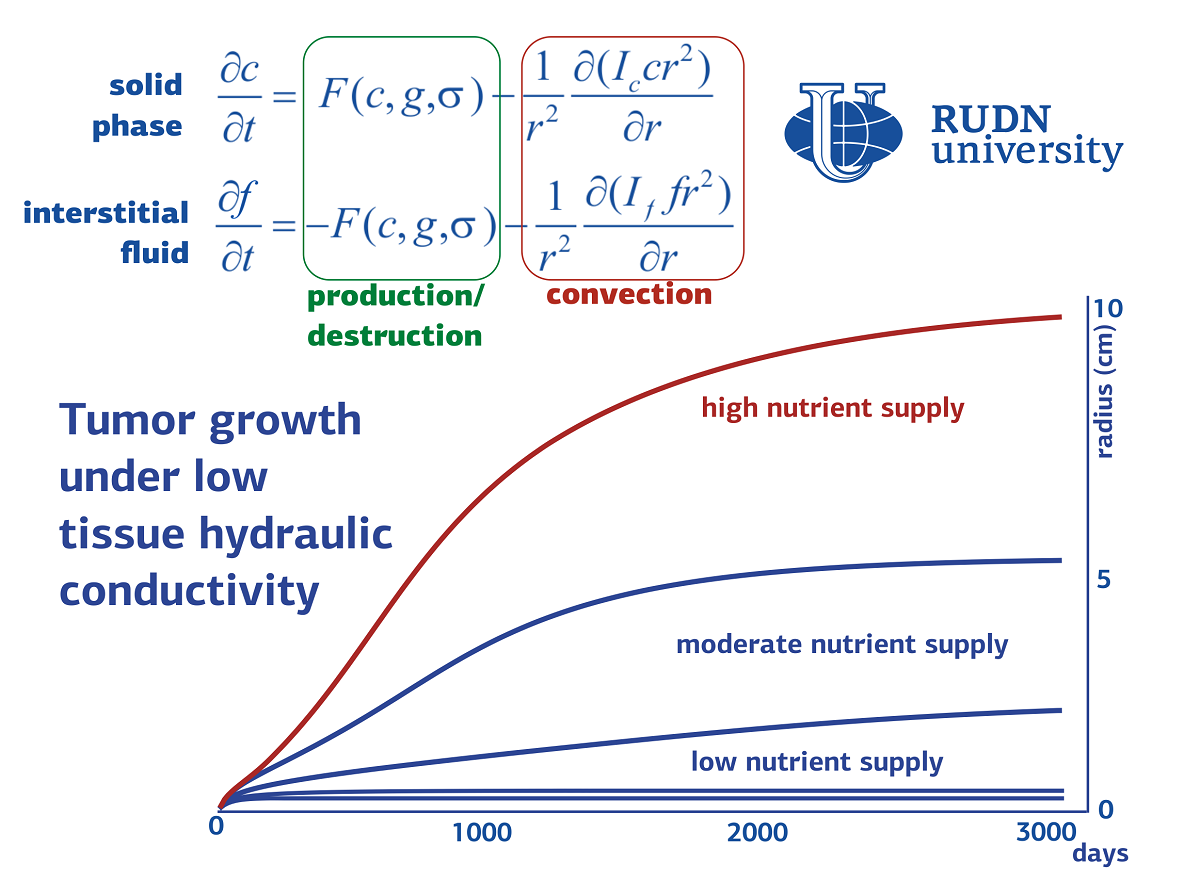RUDN University Mathematician Сreates a Model of Tumor Growth
The number of cells in a cancerous tumor should grow exponentially if the conditions are ideal for them. However, in real practice, such exponential growth is observed only in the early stages of tumor development. The main factors that limit tumor growth are the limitation of the nutrients supply and mechanical stress in the tissues. Mathematical models are used to study these processes. The mathematician from RUDN University proposed a simple mathematical model that takes into account these factors.
“Modeling tumor growth with account of biomechanical properties is not a very popular area. One of the unexplored topics, to our knowledge, is the combined influence of both crucial growth-limiting factors — nutrient availability and mechanical stress — on tumor growth”, said Maxim Kuznetsov, PhD, junior researcher at the S.M. Nikol’skii Mathematical Institute of RUDN Unviersity.
The model developed by doctor Kuznetsov describes a tumor and healthy tissues around it as a combination of a solid substance (the porous matrix) and a liquid phase (interstitial fluid). The solid phase can be produced with the use of the liquid phase — this corresponds to the division of cancer cells. On the contrary, cell death corresponds to the transition of the solid phase to the liquid phase. At that, the rates of cell division and death depend on the level of nutrients and mechanical stress. The mathematician of RUDN University described such a joint dynamics using a system of differential equations, and then studied it analytically and numerically.
As a result, the mathematician discovered two phenomena. The first is the growth of the tumor to a gigantic size (reaching tens of centimetres in diameter in several years). In numerical calculations, this happened under a sufficiently high level of nutrient supply and sufficiently low hydraulic conductivity of the tissue (its property to pass fluid through its pores). Interestingly, such cases are described in real clinical practice. This can happen with tumors which growth is accompanied by abundant production of extracellular matrix.
The second phenomenon is the slowing down of tumor growth because of the mechanical stress at lowest values of hydraulic conductivity. In such conditions, tumor growth at the first stage does not even depend on the level of nutrient supply. However, further, under strong nutrient supply, an explosive growth acceleration can happen, so that growth rate increases tenfold in a few years. Such cases do occur in clinical practice.
“The key task that will be focused on with the use of the developed version of the presented model is the optimization of various types of long-term tumor treatments, associated with the delivery of drugs to the tumor via intravenous injections. Consideration of biphasic tissue and the account for solid stress will allow reproducing adequately the dynamics of drugs and tumor during the course of therapy”, said Maxim Kuznetsov, PhD, junior researcher at the S.M. Nikol’skii Mathematical Institute of RUDN Unviersity.
The results are published in the journal Mathematics.
Products derived from microalgae represent a cutting-edge development in the field of bioeconomy. The potential of this biological resource was discussed at the international research seminar “Foundations for a Green Sustainable Energy”, part of the BRICS Network University’s thematic group on “Energy”. The event was organized by the Institute of Ecology at RUDN University.
Ambassadors of Russian education and science met at a conference in RUDN University to discuss how they can increase the visibility of Russian universities and research organizations in the world, and attract more international students in Russia.
The international scientific seminar hosted by RUDN Institute of Ecology “Experience of participation in student organizations as a way to form career skills” united scholarship recipients of the International Student Mobility Awards 2024 and Open Doors, along with members of the scientific student society “GreenLab” and the professional student association “Kostyor (Bonfire)” shared their projects focused on environmental protection.
